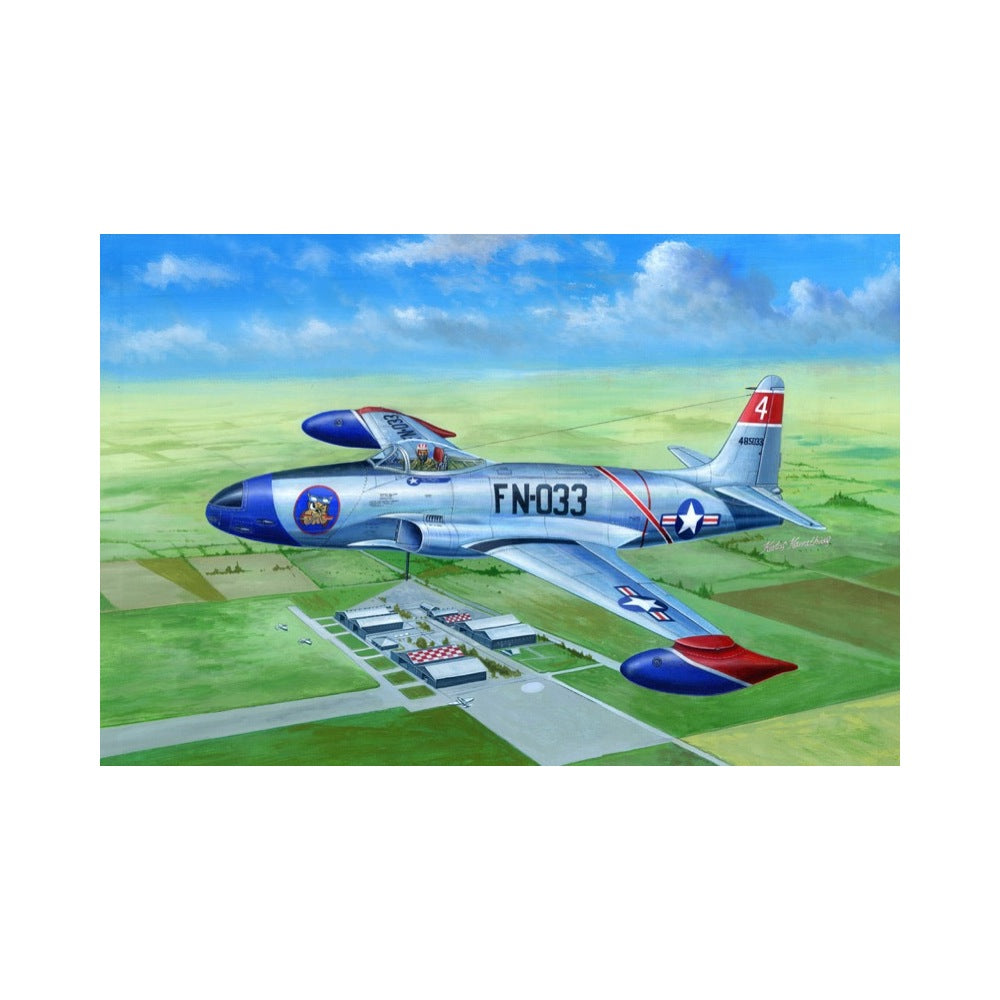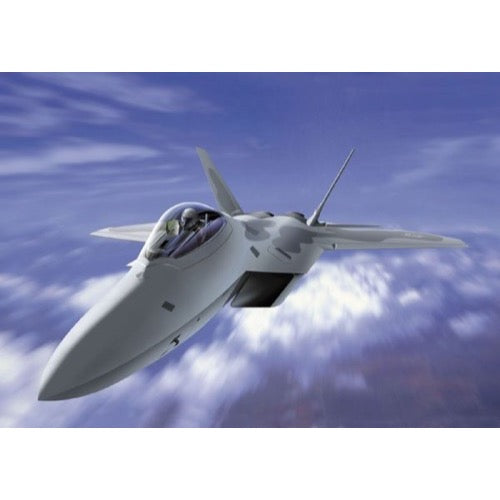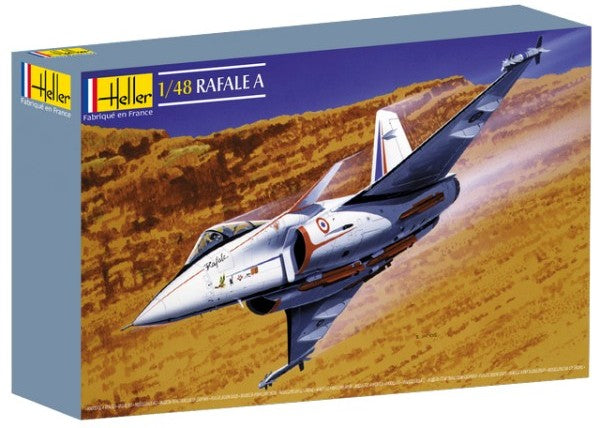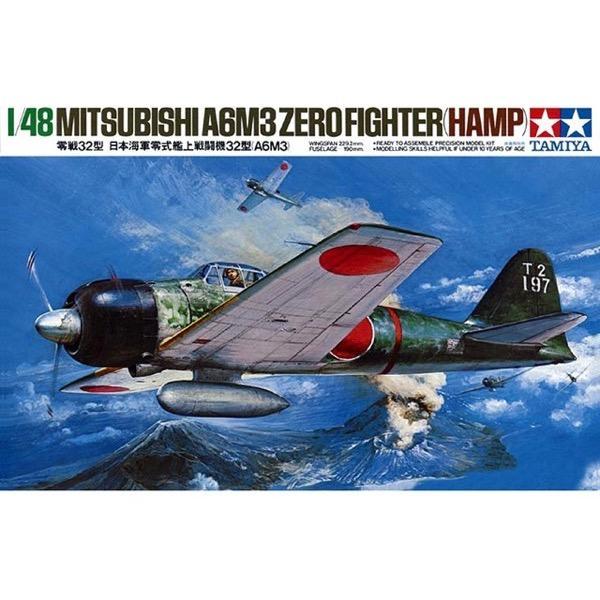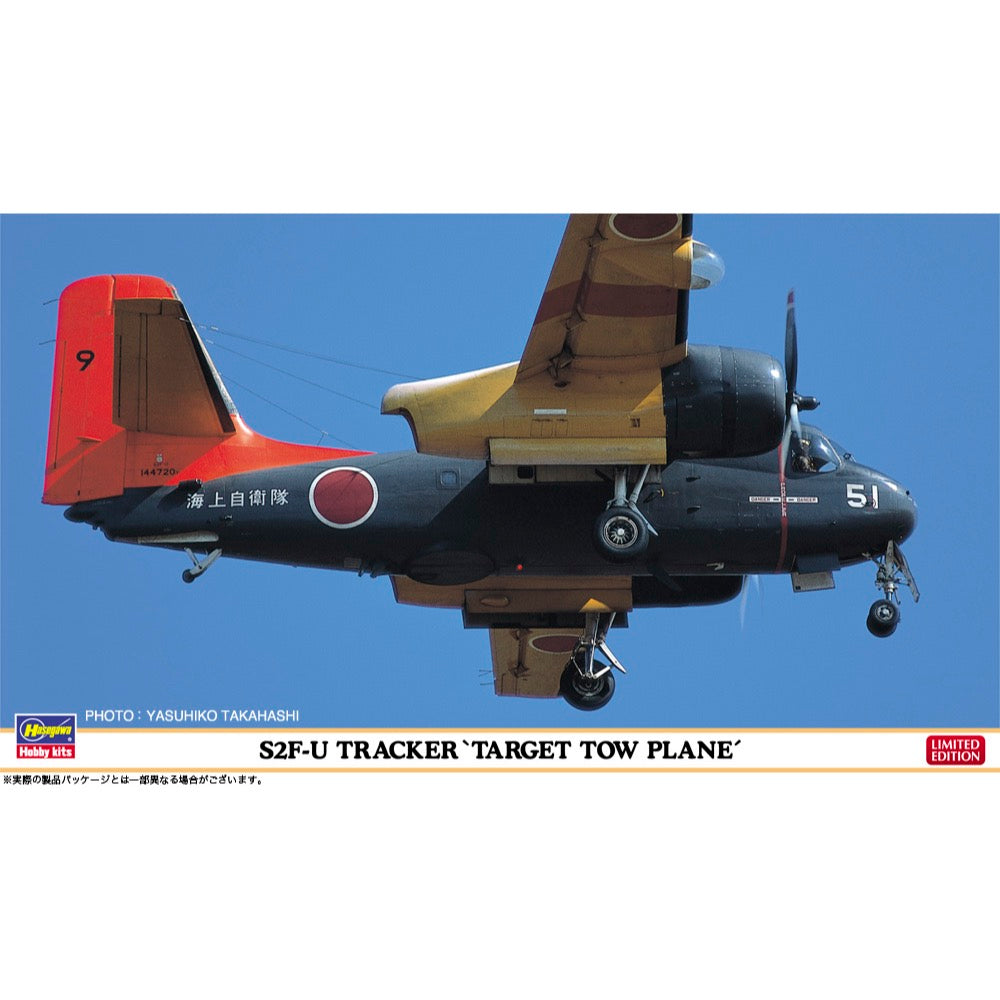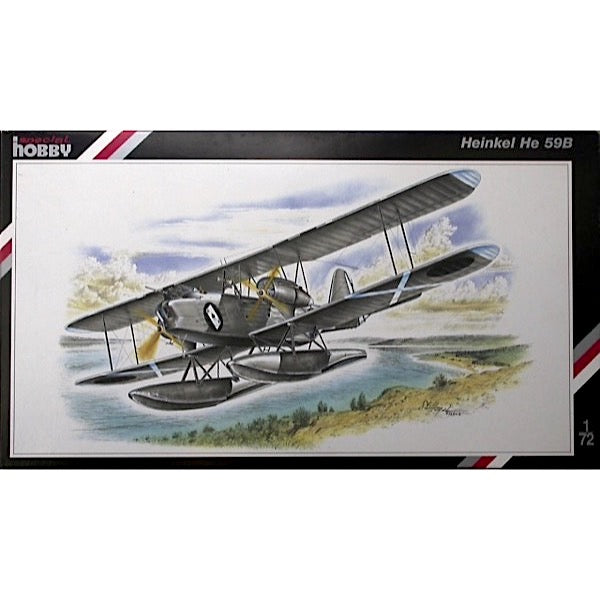
Special Hobby SH72033 1/72 Heinkel HE 59B*
52.00
$
<p>The Heinkel He 59 was a German biplane designed in 1930 resulting from a requirement for a torpedo bomber and reconnaissance aircraft able to operate on wheeled landing gear or twin-floats. During the first months of World War II, the He 59 was used as a torpedo- and minelaying aircraft. Between 1940 and 1941 the aircraft was used as a reconnaissance aircraft, and in 1941-42 as a transport, air-sea rescue, and training aircraft. The trainer models survived slightly longer in service than operational models, but all had been retired or destroyed by 1944. Some aircraft were operated by the Condor Legion in Spain during the Spanish Civil War in 1936 as coastal reconnaissance and torpedo floatplanes.</p>
<p>High quality, precision <a>plastic model kit</a>. <a>Paint</a> and <a>glue</a> not included. Requires assembly and painting. For intermediate to advanced skill modellers.</p>
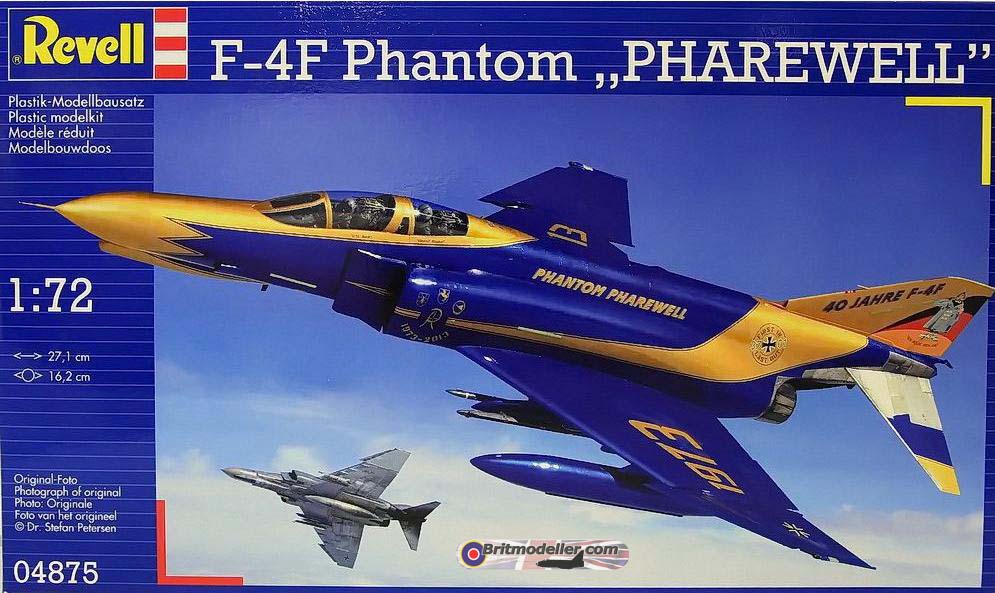
Revell 03941 1/72 F-4J Phantom US Navy
17.00
$
<p>High quality, precision <a>plastic model kit</a>. <a>Paint</a> and <a>glue</a> not included. Requires assembly and painting. For intermediate to advanced skill modellers.</p>
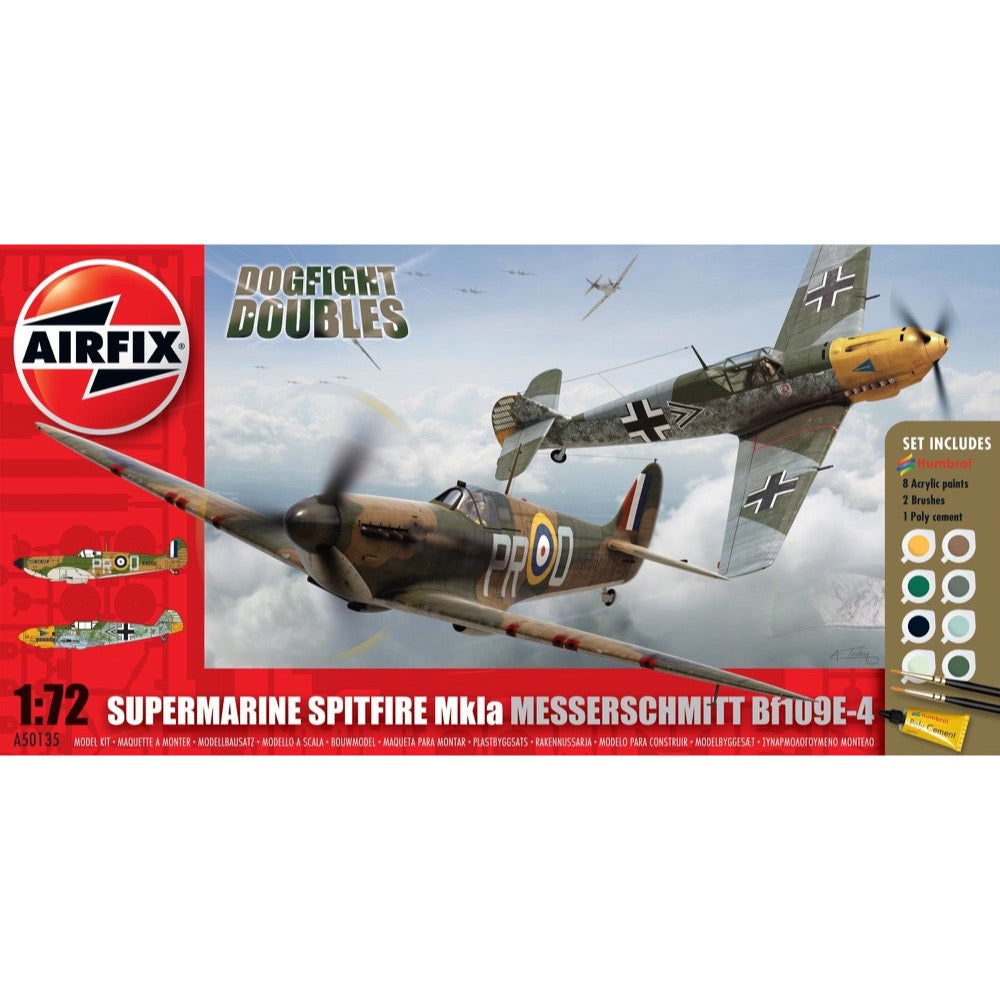
Airfix A50135 1/72 Dogfight Spitfire 1A-Messerschmitt Bf109E
22.00
$
<p>After the fall of France in 1940, the two great air arms of the day, Great Britain's RAF and Germany's Luftwaffe, faced each other in large numbers for the first time. The spearhead of the Luftwaffe was the Messerschmitt Bf109E. A formidable fighting machine, it had proved itself to be world class throughout its previous campaigns.</p>
<p>Over southern England, in the summer of 1940, it faced a new set of challenges. The most serious for the German pilots being the widespread use of the RAF's finest fighter, the Supermarine Spitfire. More maneuverable than the 109E, the Spitfire was the finest fighter of its day. This set contains two aircraft flown by aces, Helmut Wick and John Dundas. Neither survived their fateful engagement on 28th November 1940.</p>
<h4>Paint Scheme</h4>
<ul>
<li>Supermarine Spitfire Mk.Ia, Aircraft flown by Flight Lieutenant John Charles Dundas, No. 609 Squadron, November 1940</li>
<li>Messerschmitt Bf 109E-4, Aircraft flown by Major Helmut Wick, JG2, November 1940</li>
</ul>
<div>
<strong>Content:</strong> </div>
<ul>
<li>Acrylic Paints x8</li>
<li>Brushes x2</li>
<li>Poly Cement x1</li>
<li>Supermarine Spitfire MkIa: L127mm x W155mm - Pieces 36</li>
<li>Messerschmitt Bf109E-4: L120mm x W137mm - Pieces 49</li>
</ul>
<h4>Includes</h4>
<ul>
<li>Sprues</li>
<li>Decals</li>
<li>Acrylic Paints x8</li>
<li>Brushes x2</li>
<li>Poly Cement</li>
</ul>
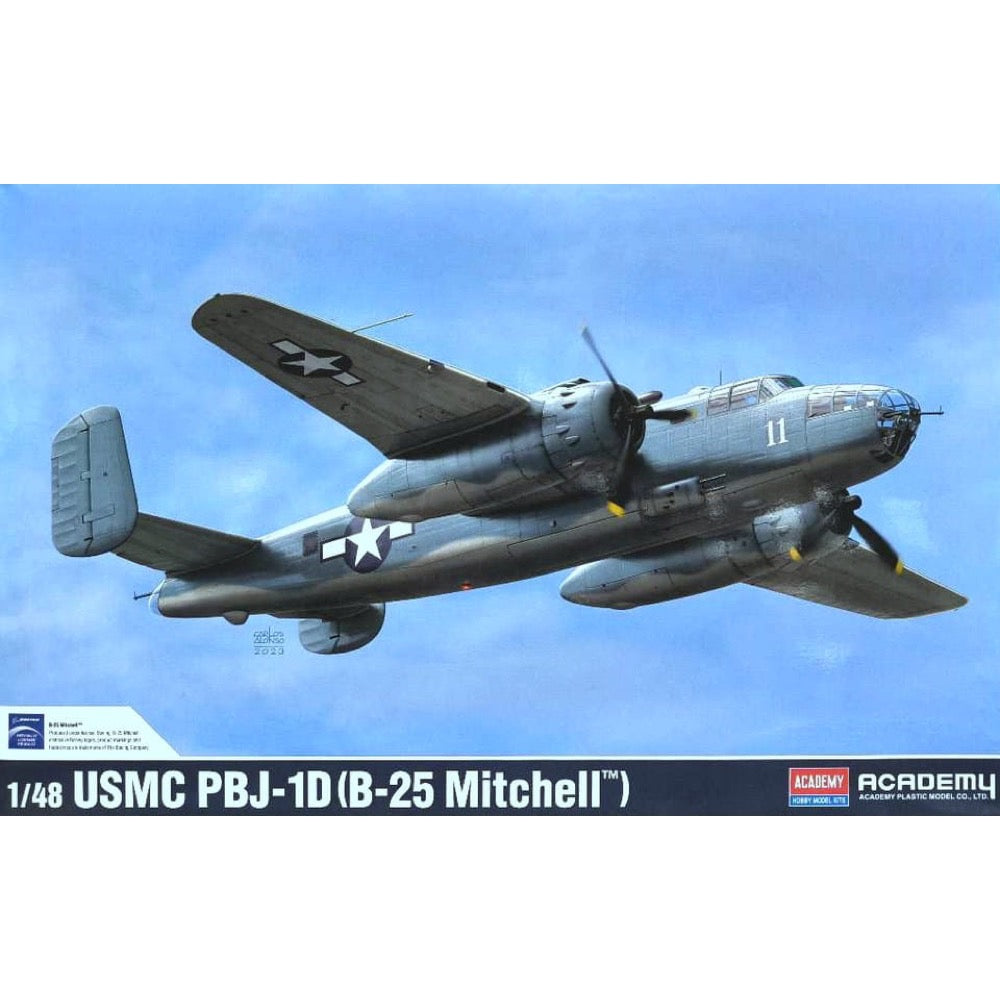
Academy 12334 1/48 USMC PBJ-1D (B-25 Mitchell)
29.00
$
<p>United States Marine Corps and Navy twin-engine medium bomber produced by North-American Aviation. A variant of the USAAF B-25 Mitchell, the PBJ-1D was introduced in 1942 and saw service in the Pacific War. Powered by four Pratt & Whitney R-2600-13 engines with a maximum speed of 330mph and a range of 1,600 miles. The PBJ-1D was armed with a nose-mounted 7.62 mm machine gun, a dorsal turret with two .50 calibre machine guns, and a ventral turret with two .50 calibre machine guns, and could carry up to 2,000 pounds of bombs</p>
<p>The North American B-25 Mitchell is an American medium bomber from the Second World War. The B-25 is a high-wing, all-metal structure with a retractable three-point landing gear and a double tail tail. The propulsion was two Wright Cyclon engines with the power from 1300KM to 1850KM, depending on the version. The flight of the prototype took place in 1940, and a year later mass production started. During the war, numerous versions of this bomber were produced, including B-25G (with a 75mm gun in the bow of the hull), B-25H (with a 75mm gun and 6 machine guns in the bow of the machine) and the B-25J (with 8 machine guns of 12.7mm in the bow of the fuselage). B-25 planes fought mainly in the Pacific and the Mediterranean basin. A number of them were handed over to Great Britain and the USSR under the lend-and-lease agreement, where they made their combat debut at Stalingrad. From 1943, the Polish 305 squadron flew on the B-25. The B-25 was famous primarily for its daring brave bomb attack on Tokyo in April 1942 (the famous Doolittle raid). Technical data: Maximum speed: 442 km / h, speed of climb: 4 m / s, maximum ceiling 7,600 m, maximum range: 4,300 km, armament: permanent - depending on the version, from 4 to 12 12.7mm Browning machine guns or combination of the 75 mm and km guns. suspended - up to 2700 kg of bombs.</p>
<h3>Features</h3>
<ul>
<li>Select from 6 markings</li>
<li>Highly detailed cockpit, bomb bay and landing gear</li>
<li>Accurately engraved panel lines and rivets</li>
<li>Masking seal included</li>
</ul>
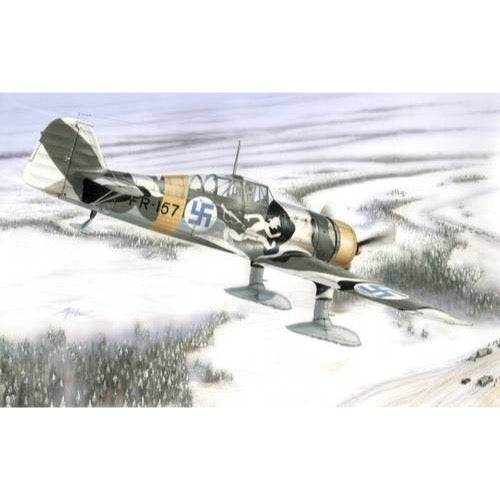
Special Hobby 48073 1/48 Fokker D.XX 14 Wasp Engine Slots Less Wings
22.00
$
<ul>
<li>Weight : 0.3795 kg</li>
<li>Era : Word War II</li>
<li>Origin : finland</li>
<li>Scale : 1/48</li>
<li>Product : Plastic kits</li>
<li>Edition : Special Hobby</li>
<li>Type : Aircraft</li>
</ul>


